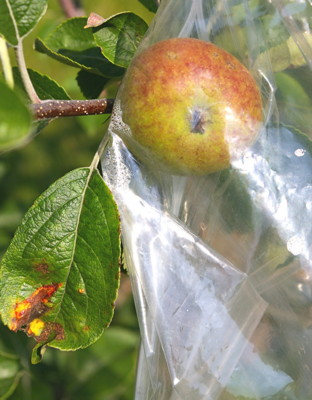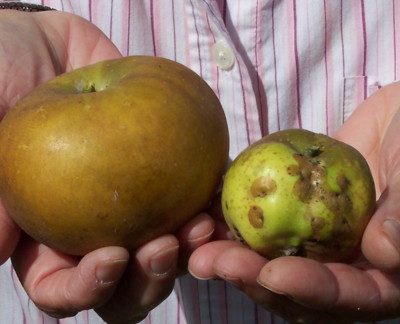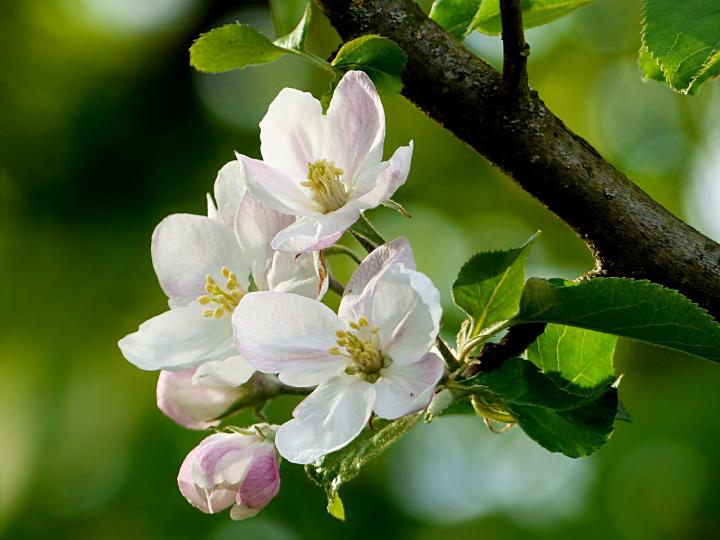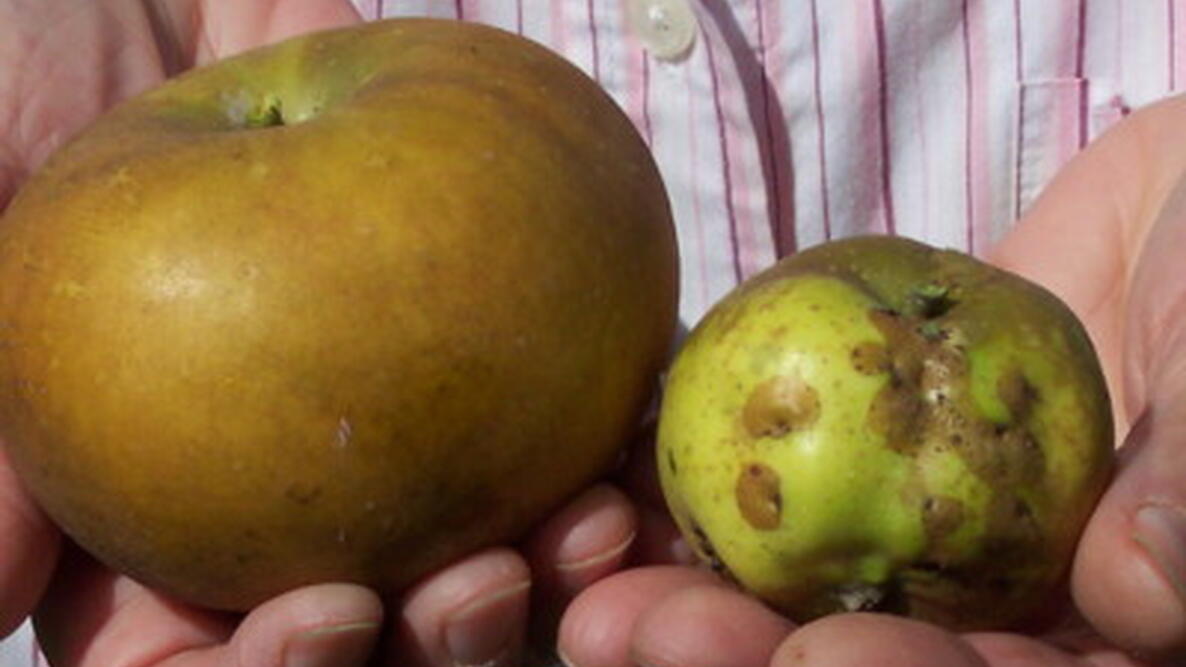Apples are the most pesticide- and fungicide-laden foods grown commercially and in home gardens. Last year, I grew apples organically with the help of fruit bagging. By bagging apples on my orchard trees, I harvested bigger, disease-free apples!
Growers start spraying trees in late winter and continue, sometimes on a weekly basis, until fruit is harvested five to eight months later—all in the name of producing perfect apples with no blemishes. It’s what we consumers demand: defect-free, flawless fruit.
However, it’s easy to grow perfect, pristine apple without any spray if you bag the apples when they are tiny, shortly after blossom drop.
For over 200 years, the Japanese tied little bags over developing fruit. They first used white silk bags they sewed until the 1960’s when plastic bags became readily available. (Look for recyclable, biodegradable bags from Amazon.com or other retailers.) Apples are prized gifts in the Japanese culture, selling for as much as $10 each. Perfection is a must for growers, so they bag each apple when they thin fruit clusters to prevent disfigurement by insects and diseases like cedar apple rust as the fruit grows.

This pristine Ashmead’s Kernel apple escapes the cedar apple rust disease (the orange growth on the leaf), because it’s bagged.
Bagging apples makes my life, as an apple grower, easier. I don’t have to spray, even organic concoctions. I just bag the apple, selecting one from each cluster when I thin fruit, spacing them about eight inches apart on branches. When it’s time to harvest, I simply snap off the apples from the tree and remove the bag.

A bagged apple is disease-free and picture-perfect, plus it’s much larger and more flavorful than those exposed to disease and insect infestations.
Extra heat gathered by the bag will help to build the brix level (sugar content) in the fruit and contributes to larger size and more flavor. Apples mature a week or two earlier when grown in bags, too, which is a bonus in colder climates like mine.

How to Bag Apples
When you see apple blossoms on the trees, you know bagging is going to start soon! Usually a week or two after blossom drop is the optimal time to bag.
Buy zipper-lock or sliding-lock sandwich plastic bags. You can find recyclable, biodegradable plastic bags now on Amazon and from other retailers.
- Snip off the two bottom corners of each bag diagonally. This allows accumulated moisture to drain away from developing fruit.
- When set fruit is about the size of a pea, thin clusters to one strong apple; space them at least 8 inches apart on branches.
- Place a bag over each fruit and close the zipper or slide lock around the fruit stem. If the fruit falls off during the process, it wasn’t fully pollinated and would abort on its own later.
After bagging, there is nothing else to do, other than to observe the developing fruit periodically.
For more tips on growing and harvesting apples, consult The Old Farmer’s Almanac’s free Apple Growing Guide.












Comments